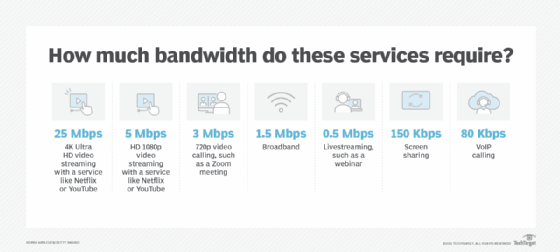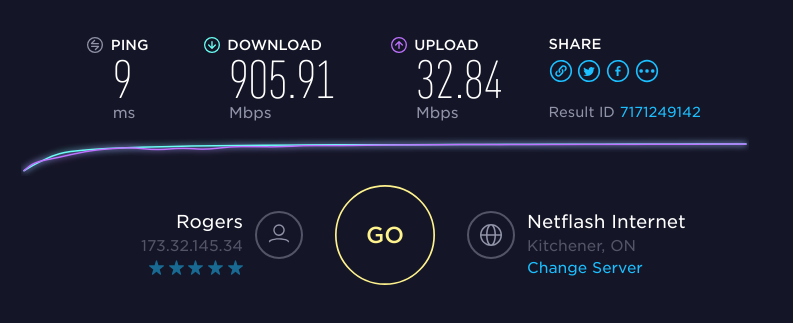The Impact of Megabits Per Second on Streaming Quality and Performance
The Impact of Megabits Per Second on Streaming Quality and Performance
Blog Article
How Megabits Per Second Effect Your Online Activities
The idea of megabits per second (Mbps) plays an essential duty in shaping our online experiences. As digital activities proliferate, understanding the implications of Mbps on video clip, streaming, and pc gaming conferencing becomes increasingly essential. Higher Mbps can boost efficiency and lower disturbances, while poor rates may foster disappointment and ineffectiveness. Evaluating your home's particular needs in connection with these speeds is essential, particularly as multiple tools compete for data transfer. The subtleties of exactly how Mbps affects different online tasks warrant more exploration, particularly as our dependence on digital connection proceeds to progress.
Comprehending Megabits Per Second
When considering internet rate, it's crucial to understand the principle of megabits per second (Mbps), which works as a standard dimension for data transfer prices. This metric evaluates how much information can be transmitted over a web link in one second, offering a clear understanding of performance abilities - Megabits Per Second. For context, one megabit amounts to one million bits, and Mbps is commonly utilized to share data transfer for different on the internet activities
A greater Mbps shows a much faster internet connection, allowing customers to perform tasks such as downloading and install documents, browsing sites, and participating in online gaming a lot more effectively. As an example, common surfing calls for around 1-5 Mbps, while streaming high-definition video may require 5-25 Mbps. Comprehending these needs is important for establishing the proper net rate required for details tasks.
Additionally, the number of gadgets attached to a network can influence total efficiency. Numerous customers streaming, gaming, or downloading concurrently can stress offered transmission capacity, causing slower rates - Megabits Per Second. Reviewing individual online practices and requirements is important in selecting an internet strategy that straightens with one's requirements, making certain a smooth electronic experience
Streaming and Buffering Issues
Streaming high-definition content has come to be a staple of modern-day on the internet entertainment, yet it is often accompanied by discouraging buffering concerns. These disruptions can substantially interfere with the viewing experience, bring about discontentment and prospective loss of target market interaction. Buffering occurs when the information sent from the streaming service is not obtained quickly enough to keep a smooth playback, commonly as a result of inadequate internet rate determined in megabits per second (Mbps)

Furthermore, real-time streaming can be influenced by network blockage, which occurs when several tools share the exact same bandwidth. Optimizing connection rate and making sure sufficient Mbps is essential for a smooth streaming experience. As streaming services continue to advance, recognizing the effect of Mbps on buffering issues continues to be vital for consumers looking for continuous home entertainment.
Online Video Gaming Efficiency
The effect of internet speed on on-line activities expands past streaming, substantially influencing on-line gaming efficiency. In competitive video gaming, reduced latency and high data transfer are essential for a smooth experience. A fast connection decreases lag, enabling gamers to react swiftly to in-game occasions, which can be the difference in between victory and loss.
Bandwidth, determined in megabits per second (Mbps), plays a vital function in supporting several tools and gaming platforms simultaneously. Not enough transmission capacity can bring about went down connections or reduced game top quality, adversely affecting gameplay. As an example, online multiplayer video games require significant information transfer, especially during peak pc gaming hours when numerous gamers are online.
Additionally, the type of game can likewise dictate the check out here needed web rate. Busy first-person shooters require greater rates to maintain responsiveness, while turn-based strategy games might work reasonably well on reduced rates. As on-line pc gaming proceeds to evolve, with enhancing visual integrity and even more intricate multiplayer settings, the need for greater Mbps will only magnify. Gamers should guarantee they have sufficient web speed to enhance their pc gaming efficiency and general experience. Spending in a robust net reference link is necessary for players seeking to enhance their performance and satisfaction.
Video Conferencing Quality
In today's electronic landscape, video conferencing quality is greatly influenced by internet rate, particularly in regards to data transfer and latency. Premium video calls call for sufficient transmission capacity to transfer sound and video information effortlessly. Normally, a minimum of 1.5 Mbps upload and download rates is suggested for standard meaning video clip, while high-def video conferencing usually demands a minimum of 3 Mbps.
Latency, or the delay between sending out and obtaining information, also plays an important role in the customer experience. Greater latency can lead to echo, lag, and disjointed interactions, which can impede cooperation and engagement during conferences.
Moreover, several individuals in a video clip meeting can stress available bandwidth, requiring also greater rates. Network congestion, frequently brought on by synchronised tasks like streaming or downloading, can better degrade video high quality. Therefore, for organizations relying upon video conferencing for remote partnership, comprehending the partnership in between megabits per total and second interaction high quality is necessary for keeping performance and boosting digital communications.
Picking the Right Web Plan
Choosing a suitable web plan is vital for making certain optimum efficiency in different on the internet activities, specifically in settings that demand high data transfer, such as video clip conferencing and online pc gaming. Megabits Per Second. When taking into consideration a net strategy, it is vital to evaluate both the speed and information allowance to match your specific use demands
For homes with several users taking part in synchronised special info activities, a strategy using higher megabits per second (Mbps) is advised. Typically, a minimum of 25 Mbps appropriates for common streaming and browsing, while strategies surpassing 100 Mbps are more suitable for even more extensive tasks. Additionally, take into consideration the nature of your online activities; video clip conferencing needs a minimum of 1.5 Mbps post speed, while online pc gaming may require a lower latency yet constant link.
Unlimited data strategies can protect against throttling and interruptions, particularly if heavy use is anticipated. By attentively selecting a web strategy tailored to your demands, you can boost your online experience, guaranteeing smooth, undisturbed accessibility to your recommended activities.
Conclusion
In final thought, the importance of megabits per second (Mbps) in shaping online tasks can not be overstated. A detailed understanding of private or household Mbps needs is essential for picking a suitable net plan that appropriately supports varied online activities and customer needs.

Generally, a minimum of 25 Mbps is ideal for basic streaming and browsing, while strategies surpassing 100 Mbps are more suitable for even more intensive tasks. In addition, take into consideration the nature of your online activities; video conferencing calls for at least 1.5 Mbps upload rate, while online video gaming may need a reduced latency however consistent link.
Report this page